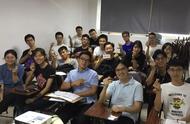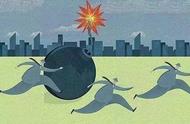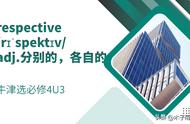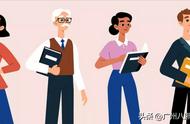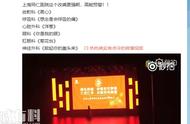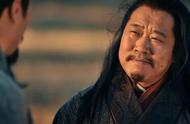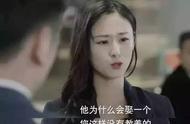Passing the challenging imperial exams was the key to a successful career in ancient China.
Teachers in ancient China were often compensated directly by families who presented tuition in the form of a customary 束脩, which consisted of a bundle of goods that usually included dried meat (肉干) and other commodities or cash based on what the family could afford.
Once inside the classroom, teachers were treated with the utmost respect by students, who kowtowed to and accepted the authority of their educators without question. This customary student-teacher relationship was rooted in the Confucian belief that rigorous education and strict hierarchies are necessary catalysts for harmonious societies.

Teachers were held in high esteem in ancient Chinese society.
Early Teachers’ Day celebrations
Since Teachers’ Day was traditionally conflated with a celebration of the life and contributions of Confucius, commemorating the philosopher remained an important holiday practice throughout much of Chinese history.
Emperors and officials celebrated the holiday by visiting regional Confucian temples, known as 孔庙 These ancient Confucian temples, thousands of which are open to visitors across China today, often house literary collections and cultural relics related to the sage and his disciples.
From the Tang dynasty (618-907 CE) to the Qing dynasty (1644-1912 CE), a formal Confucius Memorial Ceremony was held in provincial capitals around the country to mark the holiday, during which selected teachers were given a hefty bonus by the central government.
In addition to paying homage to Confucius through temple visits and ceremonies, court educators were also treated to extravegant banquets, and teachers around the country frequently received extra compensation in the form of 束脩 .

Confucius was such an important figure that many ancient temples were built in his honor.
3
teachers in modern China
The changing status of teachers in modern China
Like many elements of Chinese society, major changes to education occurred throughout the twentieth century as a result of the country’s political transformation after the collapse of China’s final dynasty, the Qing, in 1911.
Changes to education during the communist period.
After a bloody civil war, communist leader Mao Zedong announced the establishment of the People’s Republic of China in 1949. In order to strengthen the country’s newfound socialist system, class hierarchies were reconfigured.
Citizens were labeled as either class enemies or honorable members of the working class based on profession and family background. Those who had once owned property or wealth were treated as adversaries, whereas peasants were empowered due to their “good” class backgrounds.
Not belonging to either classification, teachers were caught somewhere in between, categorized as intellectuals who required reeducation along with other scholars, writers, and artists. In order for this intellectual class to break away from their alleged bourgeois backgrounds, teachers were required to become strict advocates of socialist ideology.

After the founding of the People’s Republic, teachers and students were expected to strictly adhere to the party line.
“Our educational policy must enable everyone who gets an education to develop morally, intellectually and physically, and become a cultured, socialist-minded worker,” Chairman Mao stated in his 1957 essay “On the Correct Handling of Contradictions Among the People.”
This emphasis on socialist education and the role of teachers as disseminators of socialist theory led to the complete integration of Maoist ideology in the national curriculum, as well as the dissolution of boundaries between school education and party propaganda.
During imperial times, Confucian values of education, respect and hierarchy ruled classrooms. After the founding of the People’s Republic, however, communist leaders rejected these traditional values for a time. Students were even encouraged to resist, reject, and, in some extreme cases, behave violently against teachers who were perceived to lack dedication to the political cause.

